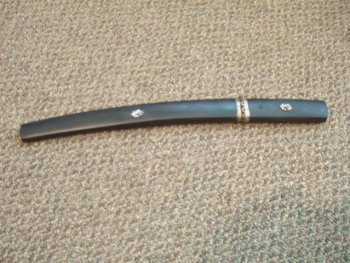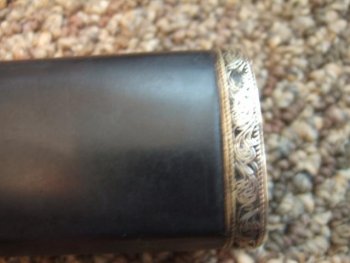Something to keep in mind is that Rob may be dealing with "mystery metal".
This is akin to someone asking:
"Can I make a knife out of this file?"
"Will this old saw blade make a good knife?"
"What about this leaf spring?"
So the person asking the questions represented above are gonna get all sorts of answers on how to solve the mystery. All sorts of tests to provide clues in an effort to determine what you're working with.
Only instead of "will this steel make a good knife?", the question now becomes "would this cast iron possibly work for bolsters?"
So testing will still need to be done, just a different "type" of testing.
Obviously, one could forego the various HT testing, as anything related to that does not apply to bolsters.
I tend to think that, for bolsters, the primary factors for material sutability are 1.aesthetics and, 2.if it is suitable for the chosen method of attachment.
The "aesthetics testing" is easy. Simply polish it to the desired level and see if you like it. Take the polished iron and lay it it on your blade to see if it provides the look you're after.
Your method of attachment is the next step, and it really depends on the style of knife you're making. So this is tied in with "aesthetics".
We see all sorts of threads about peening the pins, making them "blend in", etc.
Then there are questions about soldering vs. epoxy, etc.
The first thing to realize is that, in this case, both peening and "blending" the pins should be way down the list in importance. You're gonna have considerable difficulty finding a malleable material (suitable for peening) that matches (blends, whatever) well with the iron bolster.
That's OK; there are plenty of examples out there where contrasting materials are intentionally used to provide good effect.
In this case, the pin should be used for purposes of locating or visual effect, rather than a mechanical lock. JBWeld is gonna be your friend here.
There are several types of "cast iron", and just like steel, each type is better for some applications than others.
Grey cast iron- This is the most common type. The engine block in your vehicle is made out of this. Your cast iron cookware is made out of it.
White iron- With the exception of a specialized nickel-iron alloy, this is the hardest of the cast irons. Thus, it is also likely the most brittle.
I have a friend who is a heavy equipment mechanic for a coal company. He says that white iron castings are used not for their strength, but for abrasive resistance without the expense of steel. Impellers on slurry pumps, bearing races, etc.
Malleable iron- This is white iron that has been annealed. It has properties similar to mild steel. Considering that it's "cast iron", this stuff is tough!
It is used considerably in the automotive industry. Crankshafts, axle bearings, etc.
Ductile iron- This is also called nodular iron. It is much like malleable iron, except that it is alloyed differently.
The limitation with malleable iron is that it is simply white iron that has been heat treated. So you're limited on how big of a part you can make. With nodular iron, the different alloy allows the same properties of malleable iron, but no annealing is required. So you can cast huge parts, and the desired properties will be present throughout the entire part.
I remember as a teenager when we would scour the salvage yards for Ford 9" housings for our weekend racers. If we found one with an "N", it was like striking gold!
Good Luck in your experimenting.
Rob








